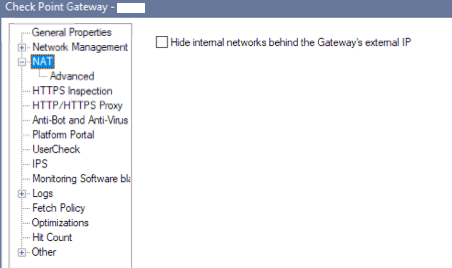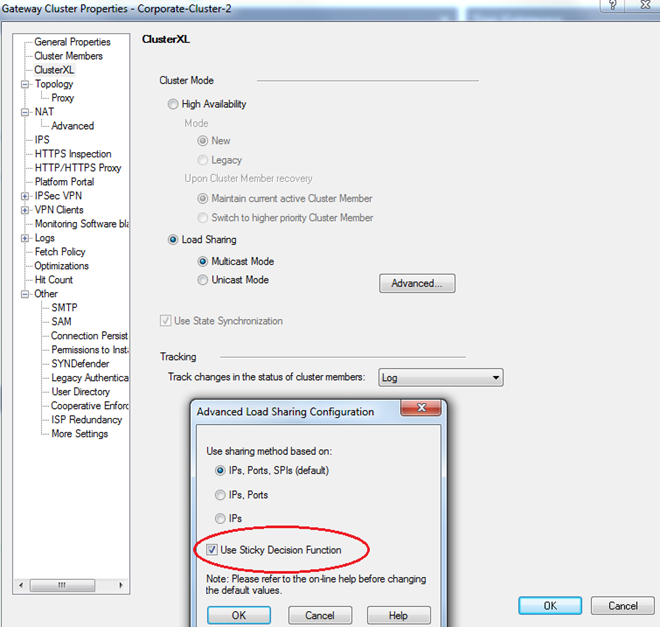- Products
Quantum
Secure the Network IoT Protect Maestro Management OpenTelemetry/Skyline Remote Access VPN SD-WAN Security Gateways SmartMove Smart-1 Cloud SMB Gateways (Spark) Threat PreventionCloudGuard CloudMates
Secure the Cloud CNAPP Cloud Network Security CloudGuard - WAF CloudMates General Talking Cloud Podcast - Learn
- Local User Groups
- Partners
- More
This website uses Cookies. Click Accept to agree to our website's cookie use as described in our Privacy Policy. Click Preferences to customize your cookie settings.
- Products
- Quantum (Secure the Network)
- CloudGuard CloudMates
- Harmony (Secure Users and Access)
- Infinity Core Services (Collaborative Security Operations & Services)
- Developers
- Check Point Trivia
- CheckMates Toolbox
- General Topics
- Infinity Portal
- Products Announcements
- Threat Prevention Blog
- CheckMates for Startups
- Learn
- Local User Groups
- Upcoming Events
- Americas
- EMEA
- Czech Republic and Slovakia
- Denmark
- Netherlands
- Germany
- Sweden
- United Kingdom and Ireland
- France
- Spain
- Norway
- Ukraine
- Baltics and Finland
- Greece
- Portugal
- Austria
- Kazakhstan and CIS
- Switzerland
- Romania
- Turkey
- Belarus
- Belgium & Luxembourg
- Russia
- Poland
- Georgia
- DACH - Germany, Austria and Switzerland
- Iberia
- Africa
- Adriatics Region
- Eastern Africa
- Israel
- Nordics
- Middle East and Africa
- Balkans
- Italy
- APAC
- Partners
- More
- ABOUT CHECKMATES & FAQ
- Sign In
- Leaderboard
- Events
CheckMates Toolbox Contest 2024
Submit a Tool for a Chance to WIN a $300 or $50 Gift Card!
May the 4th (+4)
Roadmap Session and Use Cases for
Cloud Security, SASE, and Email Security
Harmony Endpoint:
Packing a Punch in 2024
CPX 2024 Content
is Here!
Harmony SaaS
The most advanced prevention
for SaaS-based threats
CheckMates Go:
The Difference Is In The Details
Turn on suggestions
Auto-suggest helps you quickly narrow down your search results by suggesting possible matches as you type.
Showing results for
- CheckMates
- :
- Products
- :
- Quantum
- :
- Management
- :
- Re: How do I allow DHCP relay from a non-Checkpoin...
Options
- Subscribe to RSS Feed
- Mark Topic as New
- Mark Topic as Read
- Float this Topic for Current User
- Bookmark
- Subscribe
- Mute
- Printer Friendly Page
Turn on suggestions
Auto-suggest helps you quickly narrow down your search results by suggesting possible matches as you type.
Showing results for
Are you a member of CheckMates?
×
Sign in with your Check Point UserCenter/PartnerMap account to access more great content and get a chance to win some Apple AirPods! If you don't have an account, create one now for free!
- Mark as New
- Bookmark
- Subscribe
- Mute
- Subscribe to RSS Feed
- Permalink
- Report Inappropriate Content
How do I allow DHCP relay from a non-Checkpoint host to pass the firewall?
Hello,
I am having issues getting DHCP relay to work through my R77.30 security management and gateway cluster.
I have a half dozen subnets that have the firewall as their default gateway, and the firewall acts as the DHCP relay for them, with the DHCP Server being located in a DMZ zone. This is working fine.
The problem is I have a new 3rd party VPN application. The VPN server acts as the DHCP relay for its clients and uses the same DMZ DHCP server to service its clients. I am unable to receive DHCP offers from the DHCP Server.
Wireshark packet captures on the DHCP server show the request coming in and a proper response going back out. The capture on the VPN server shows the DHCP offer coming from an incorrect IP - its coming from the public internet IP of my firewall instead of the DHCP server address. I have a NAT rule in place to keep the packets at their original addresses, but it seems to come out as the public IP, which is the final NAT rule. It kind of looks like the NAT rule is being ignored when its DHCP.
I've gone through SK104114 - Configuration of IPv4 BOOTP/DHCP Relay using new services and configured everything as instructed.
My rulebase is using the new dhcp-request and dhcp-reply services as per the above document.
I don't see a lot of this traffic in the tracker either, but I can see it in FW MONITOR and zdebug.
Any ideas?
- Tags:
- dhcp relay
10 Replies
- Mark as New
- Bookmark
- Subscribe
- Mute
- Subscribe to RSS Feed
- Permalink
- Report Inappropriate Content
What do your NAT rules look like?
Are the NAT rules automatic NAT rules or static ones?
Also, can you confirm what this setting is on your gateway object?

- Mark as New
- Bookmark
- Subscribe
- Mute
- Subscribe to RSS Feed
- Permalink
- Report Inappropriate Content
This was my experience running on R77.20
When the firewall needs to work as a DHCP relay for e.g. Microsoft Windows clients this “can” cause problems if the client is running Microsoft Firewall or similar. The returned DHCP packet will come from the cluster IP address and will be blocked as not statefull by the Microsoft Firewall running on the client.To correct this issue the option ‘Hide Cluster Members’ outgoing traffic behind the cluster’s IP Address’ needs to be unchecked. The problem is that this option is on the ‘3rd Party Configuration’ tab, which is normally not shown when the ClusterXL option is selected (which is normally the case for a cluster).To enable the ‘3rd Party configuration’ tab you have to uncheck ClusterXL in General Properties of the cluster. After unchecking this option you can access to 3rd Party Configuration options (where it was supposed to be ClusterXL options), uncheck ‘Hide Cluster Members’ outgoing traffic behind the cluster’s IP Address’ option.
After this go back into General Properties and check ClusterXL again. After this change, DHCP-relay and Windows will work like a charm.
In R77.30, this function is replaced with Sticky Decision Function (SDF)
GW Cluster > CluserXL > Advanced > Use Sticky Decision Function
In addition take also a look at sk97566
Good luck !!!
R77.20

R77.30

Security Solutions Expert for Global Strategic Partners GSI/MSP/Telco & Consultancy Firms
- Mark as New
- Bookmark
- Subscribe
- Mute
- Subscribe to RSS Feed
- Permalink
- Report Inappropriate Content
Ensure that when you configure the dhcp relay interface in GAIA that you're manually entering the cluster vip and not leaving it set to automatic. This is very important.
If you do a tcpdump -nni at command line do you see the traffic go out and come back successfully??
--Juan
- Mark as New
- Bookmark
- Subscribe
- Mute
- Subscribe to RSS Feed
- Permalink
- Report Inappropriate Content
I have the same situation where external device sends DHCP requests as a relay and they are received and answered at the other interface in gateway. I can see the DHCP Offer coming to correct interface, but after that it disappears completely. Haven't had time to trace it in Gaia yet.
In addition I see the original request first being transferred through non-NATted packet and after that the same query tries to come in NATted with gw external ip and that's when the gw drops that second request, since the UDP packet contains original non-NATted source ip.
- Mark as New
- Bookmark
- Subscribe
- Mute
- Subscribe to RSS Feed
- Permalink
- Report Inappropriate Content
Make sure you don’t have NAT enabled between the relay and the dhcp server, it should be just a normal routed connection once the relay sends request to dhcp server.
--Juan
- Mark as New
- Bookmark
- Subscribe
- Mute
- Subscribe to RSS Feed
- Permalink
- Report Inappropriate Content
I think there isn't, even though the requesting net is hidden when (with network automatic NAT rules) connecting to internet, but when connecting to internal resources (which work with static ip), it doesn't use NAT.
- Mark as New
- Bookmark
- Subscribe
- Mute
- Subscribe to RSS Feed
- Permalink
- Report Inappropriate Content
From the relay host can you communicate successfully with the dhcp server (ping or something of the sort)??
--Juan
- Mark as New
- Bookmark
- Subscribe
- Mute
- Subscribe to RSS Feed
- Permalink
- Report Inappropriate Content
Yes, that works okay. All devices can ping each other and without dhcp everything seems to work fine.
- Mark as New
- Bookmark
- Subscribe
- Mute
- Subscribe to RSS Feed
- Permalink
- Report Inappropriate Content
If user connects to 3rd Pary VPN application and then that application in turn does a bootp/dhcp request out to the dhcp server then the firewall must have dhcp relay interface enabled on the interface facing he 3rd Party VPN application if i'm understanding the flow correctly.
- Mark as New
- Bookmark
- Subscribe
- Mute
- Subscribe to RSS Feed
- Permalink
- Report Inappropriate Content
That wasn't actually the picture, but MPLS network trying to get through firewall to get an address. Anyway, managed to fix it via instructions in sk104114 (which support gave me), where I just had to change the rules and implement rules 2 and 4 in the example. The rule number four had to be changed to letting dhcp server to communicate to dhcp relay outside. There has to be explicit rules for dhcp request/reply.
All in all I had to do changes to kernel parameters, install one add-on and remove ports from table.def in addition to those rules.
Leaderboard
Epsum factorial non deposit quid pro quo hic escorol.
| User | Count |
|---|---|
| 8 | |
| 8 | |
| 5 | |
| 3 | |
| 3 | |
| 2 | |
| 2 | |
| 2 | |
| 2 | |
| 2 |
Upcoming Events
Thu 16 May 2024 @ 10:00 AM (CEST)
EMEA: Playblocks & MS Defender – Security Automation DeepDive into New Endpoint IntegrationThu 16 May 2024 @ 04:00 PM (CEST)
CheckMates Live DACH - ACHTUNG, Sie werden gehackt! So schützen Sie sich!Thu 16 May 2024 @ 05:00 PM (CEST)
Americas: Playblocks & MS Defender – Security Automation DeepDive into New Endpoint IntegrationFri 17 May 2024 @ 10:00 AM (CEST)
CheckMates Live Netherlands - Sessie 26: ElasticXL & VSNext DescriptionTue 21 May 2024 @ 10:00 AM (CEST)
CheckMates Live DACH - Einführung in Check Points Hyperscalinglösung - Quantum MaestroThu 16 May 2024 @ 04:00 PM (CEST)
CheckMates Live DACH - ACHTUNG, Sie werden gehackt! So schützen Sie sich!Fri 17 May 2024 @ 10:00 AM (CEST)
CheckMates Live Netherlands - Sessie 26: ElasticXL & VSNext DescriptionTue 21 May 2024 @ 10:00 AM (CEST)
CheckMates Live DACH - Einführung in Check Points Hyperscalinglösung - Quantum MaestroWed 22 May 2024 @ 10:00 AM (BRT)
Brazil: Desafios e melhores práticas na gestão de CibersegurançaAbout CheckMates
Learn Check Point
Advanced Learning
YOU DESERVE THE BEST SECURITY
©1994-2024 Check Point Software Technologies Ltd. All rights reserved.
Copyright
Privacy Policy
Facts at a Glance
User Center


